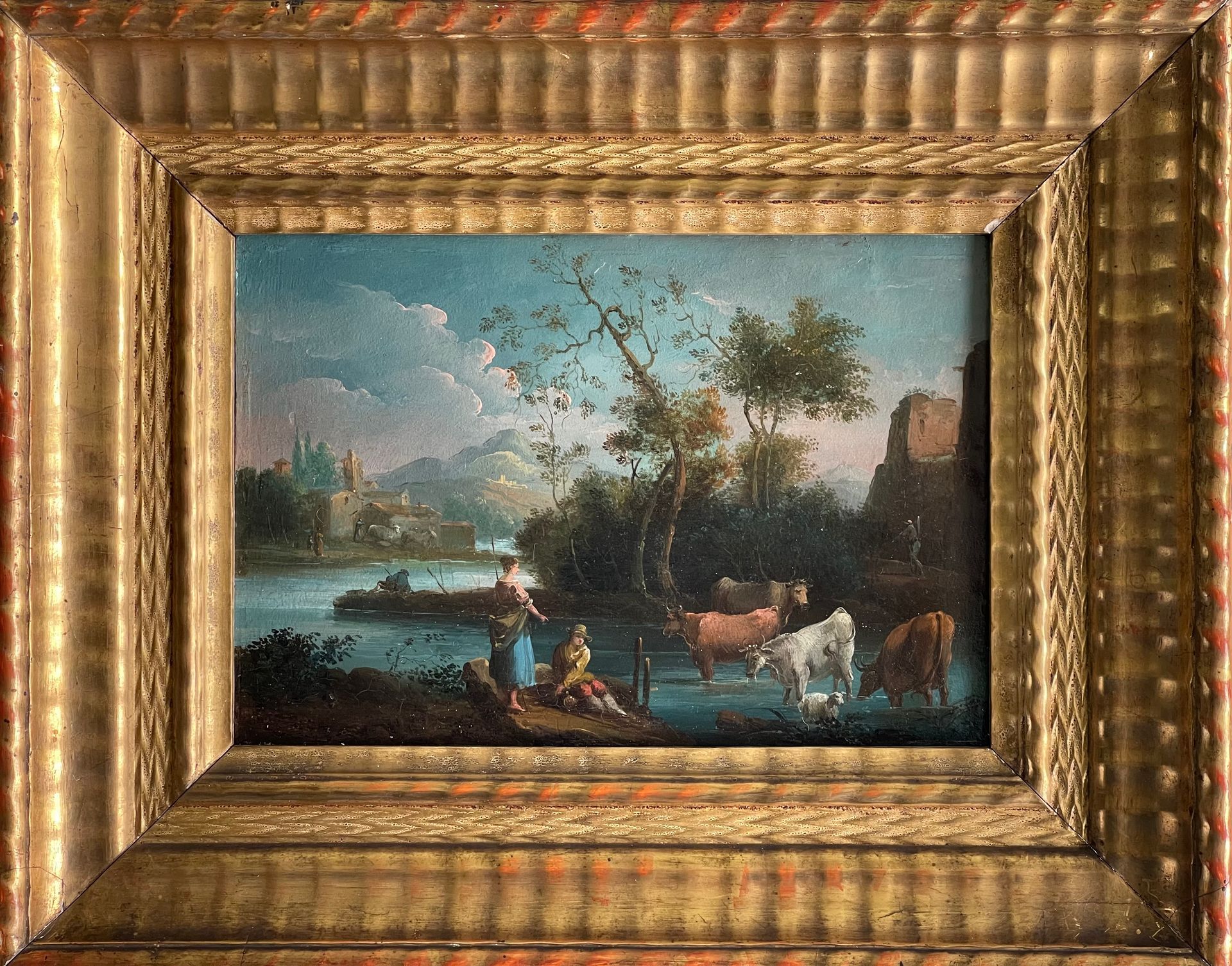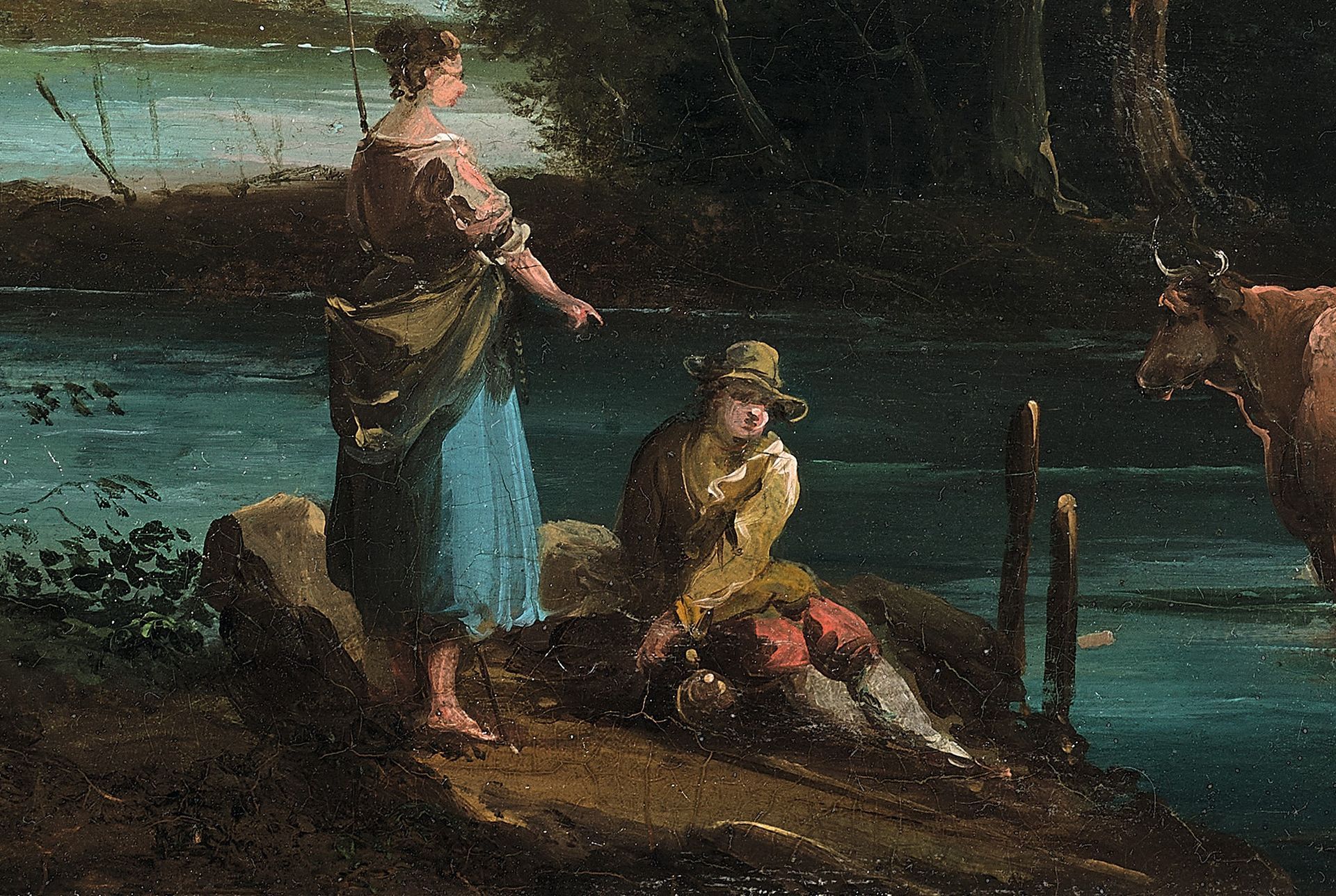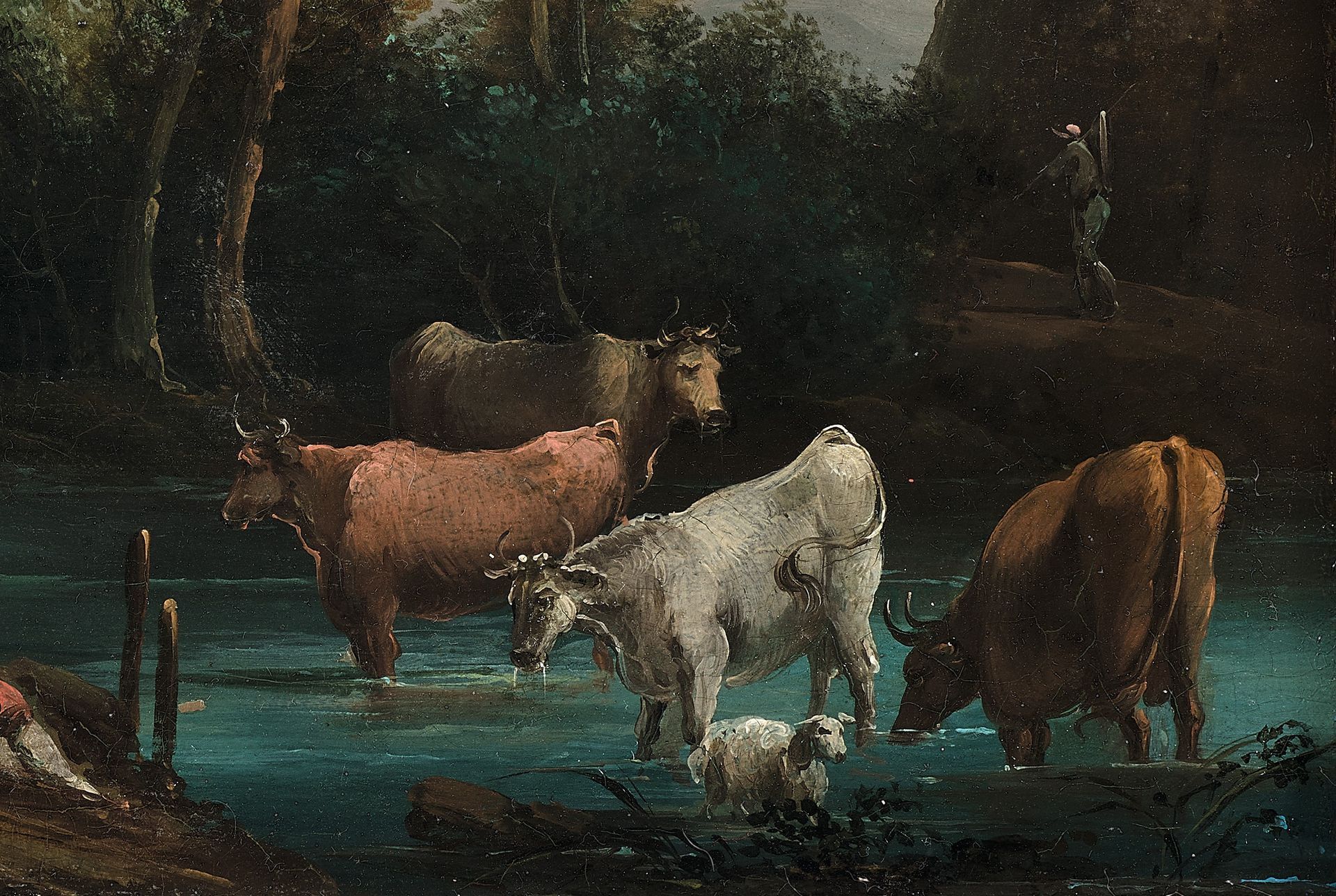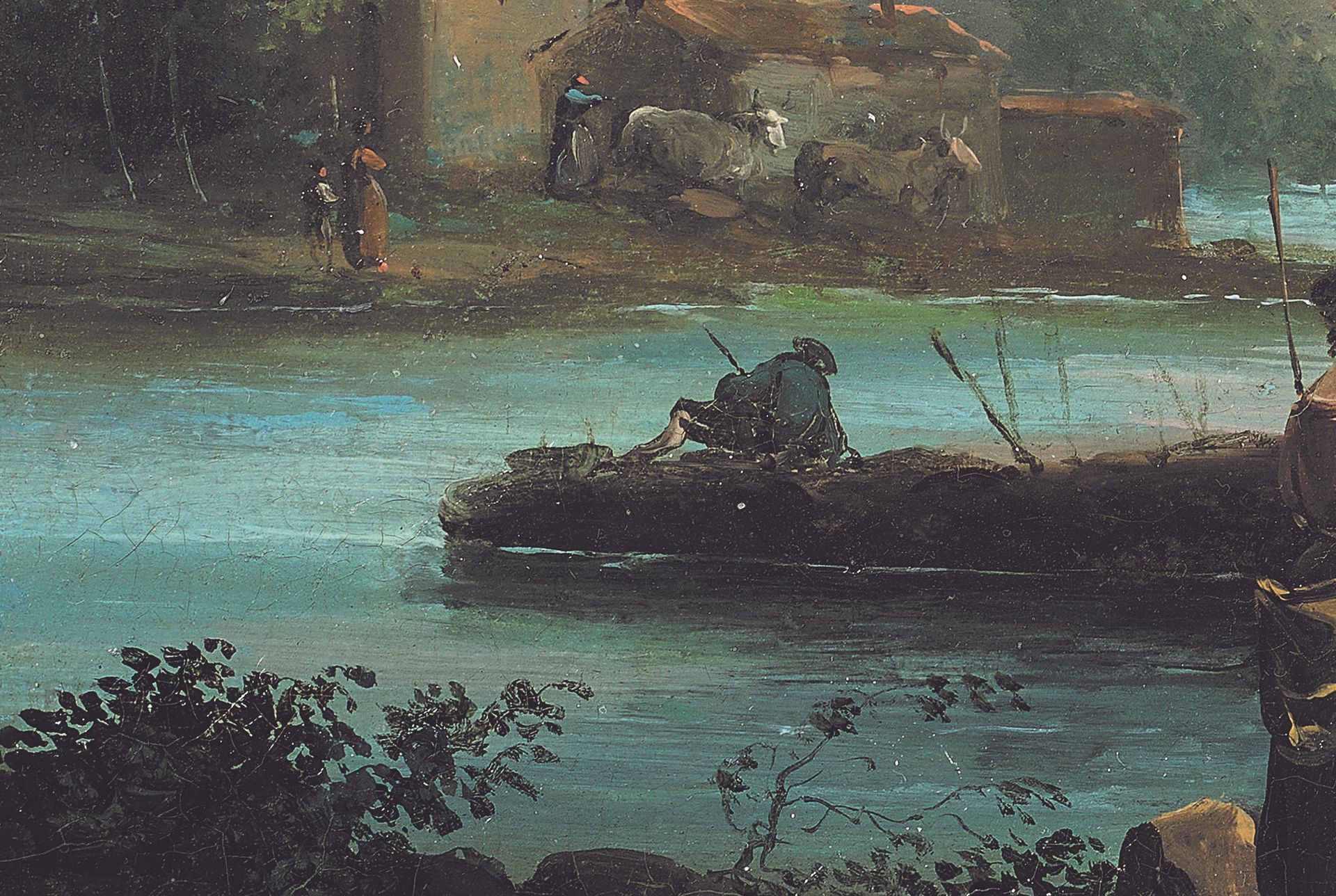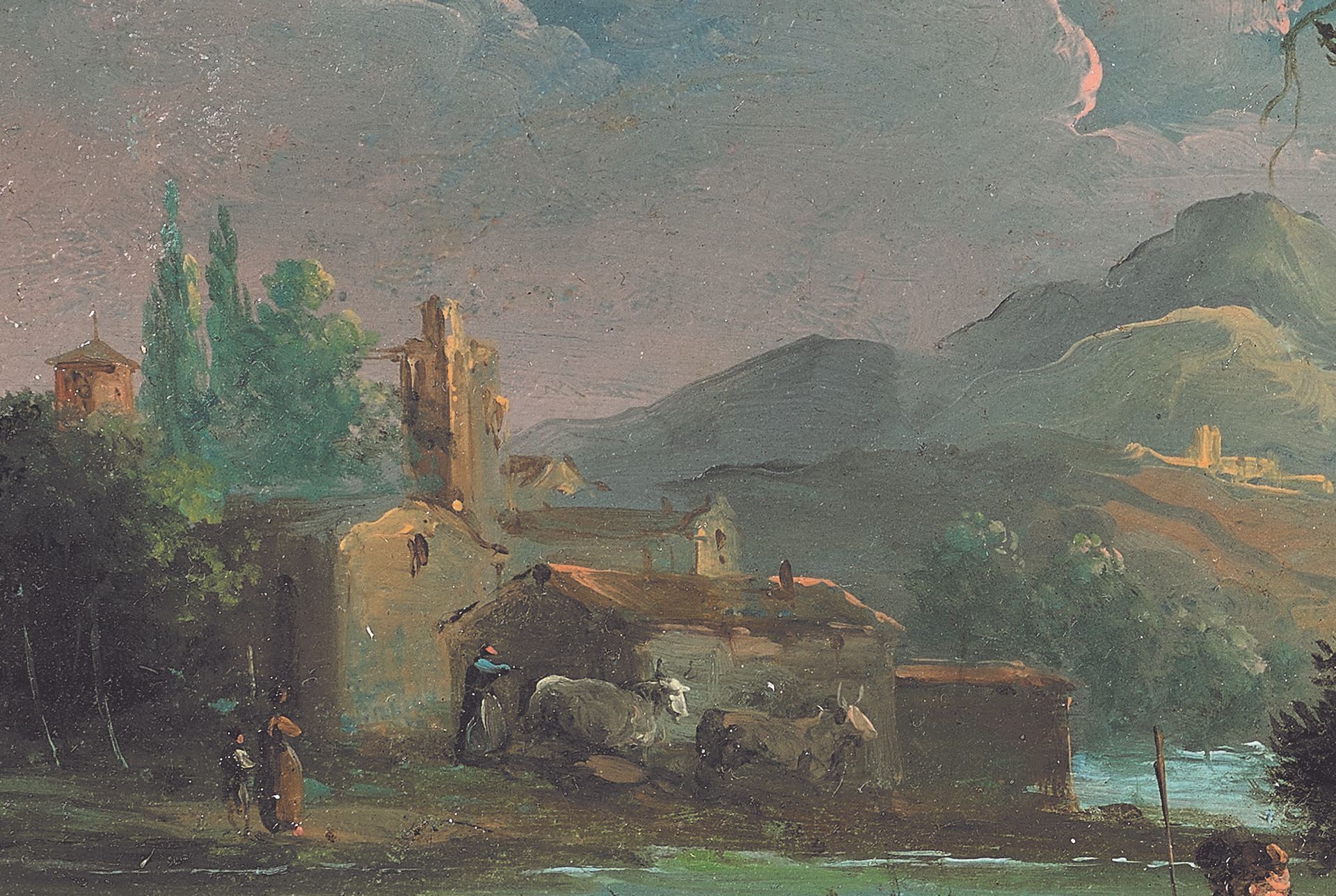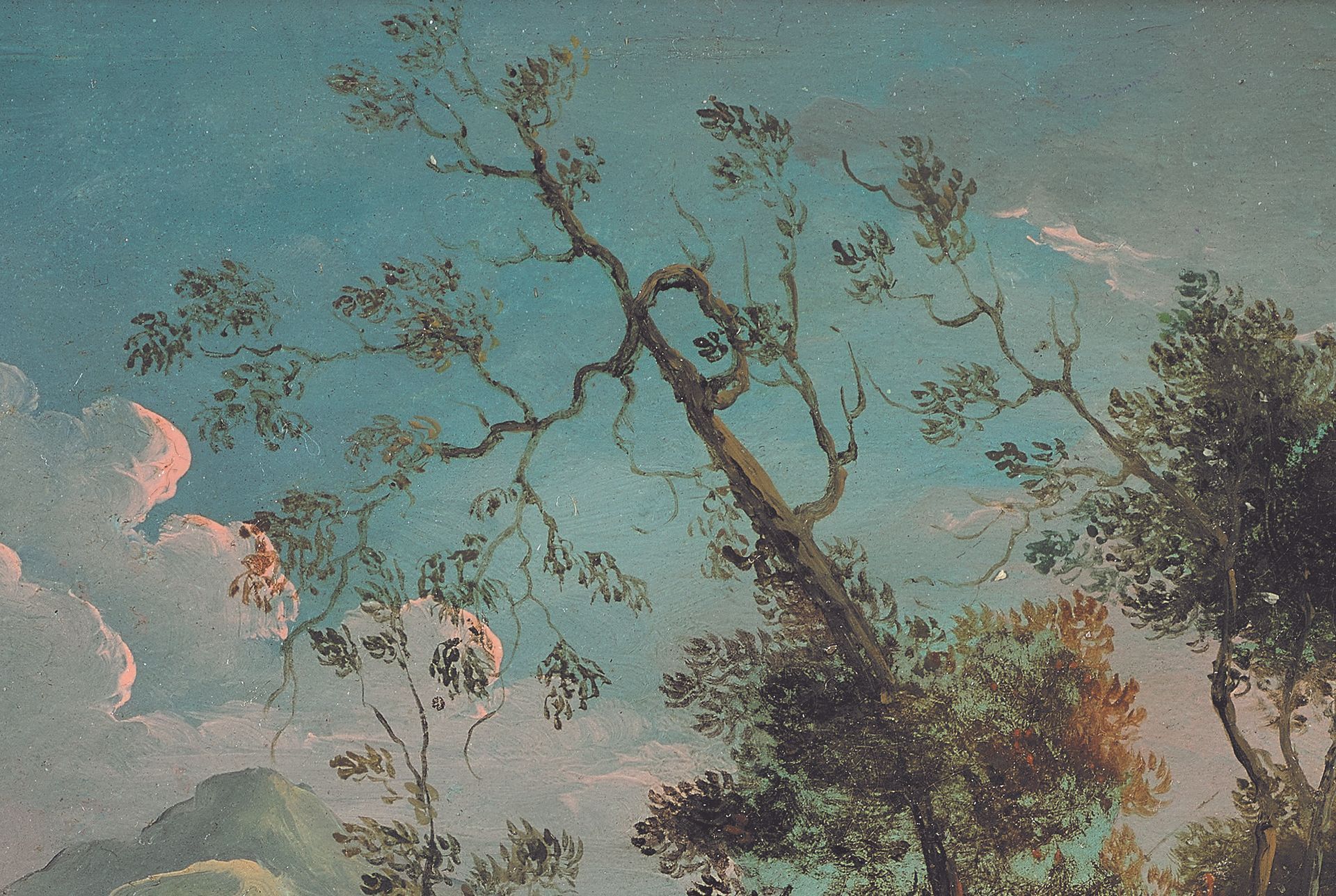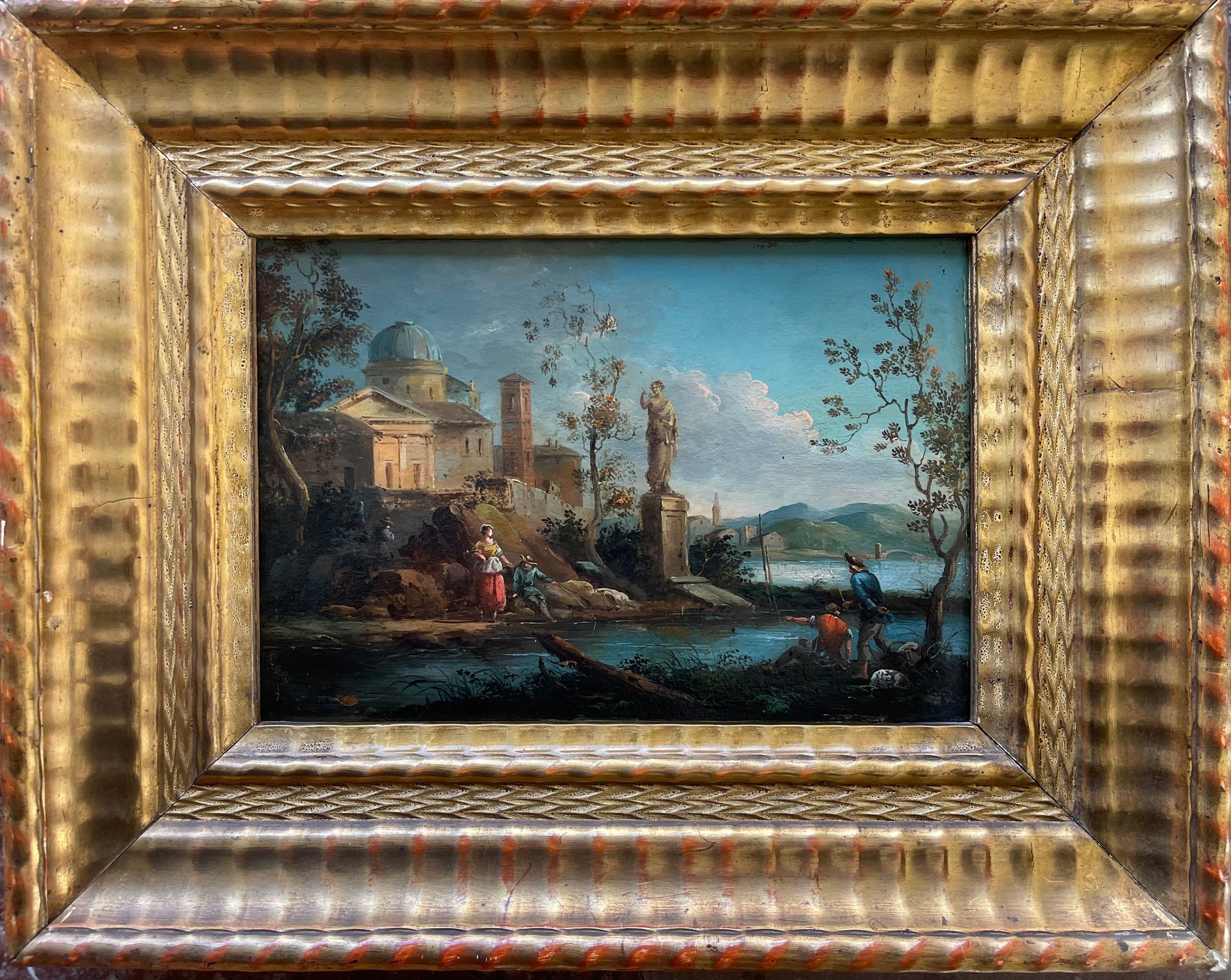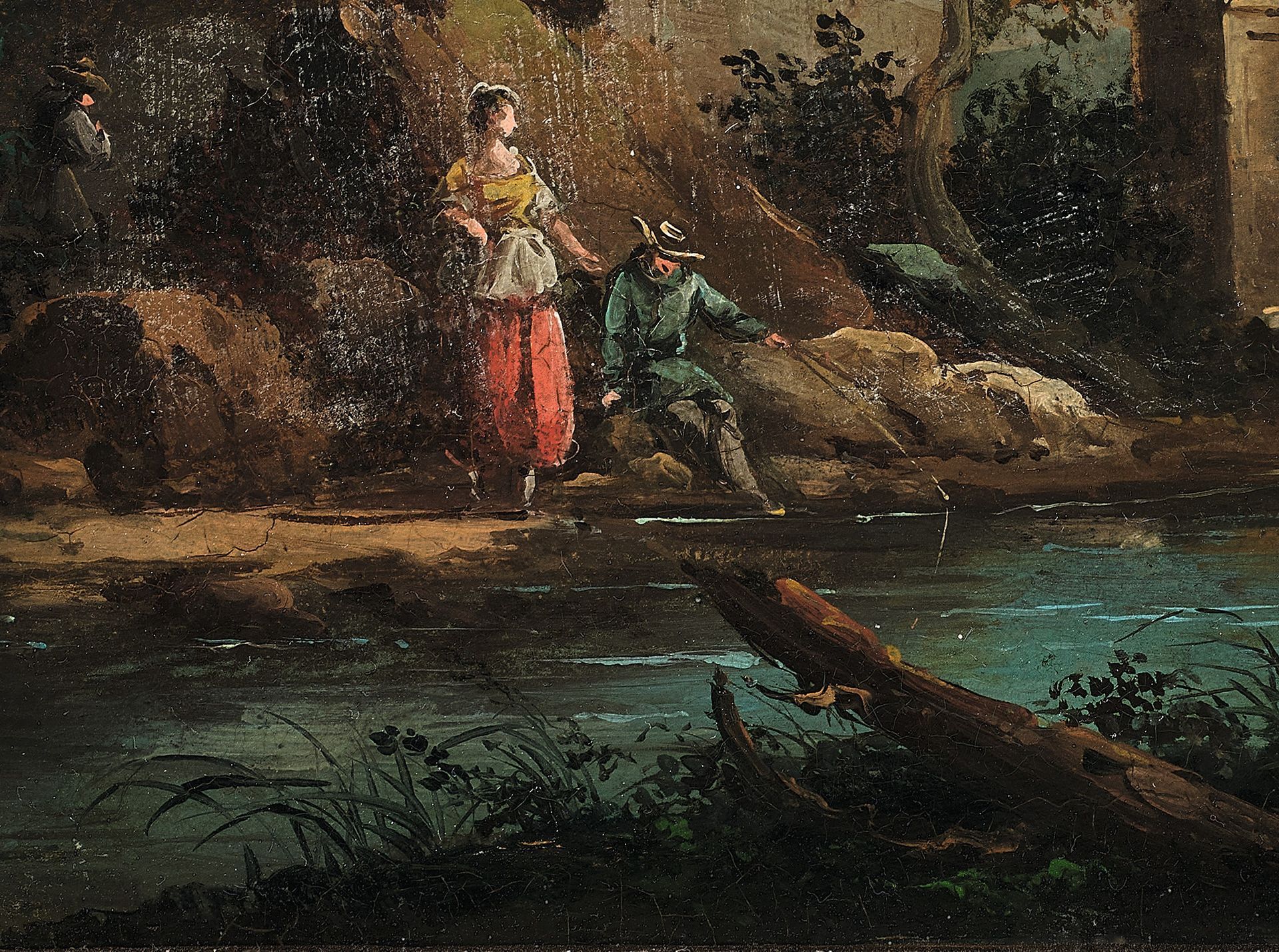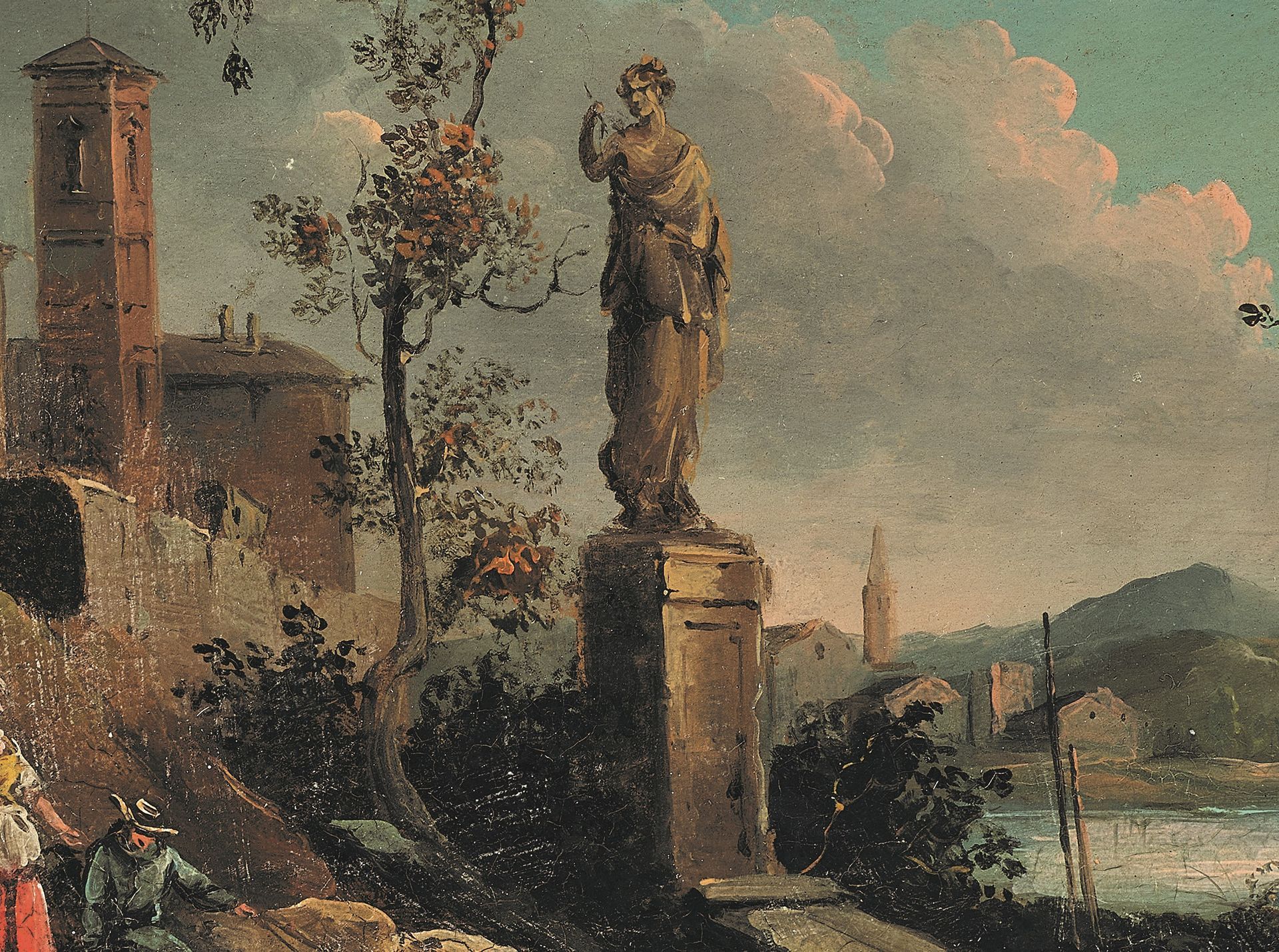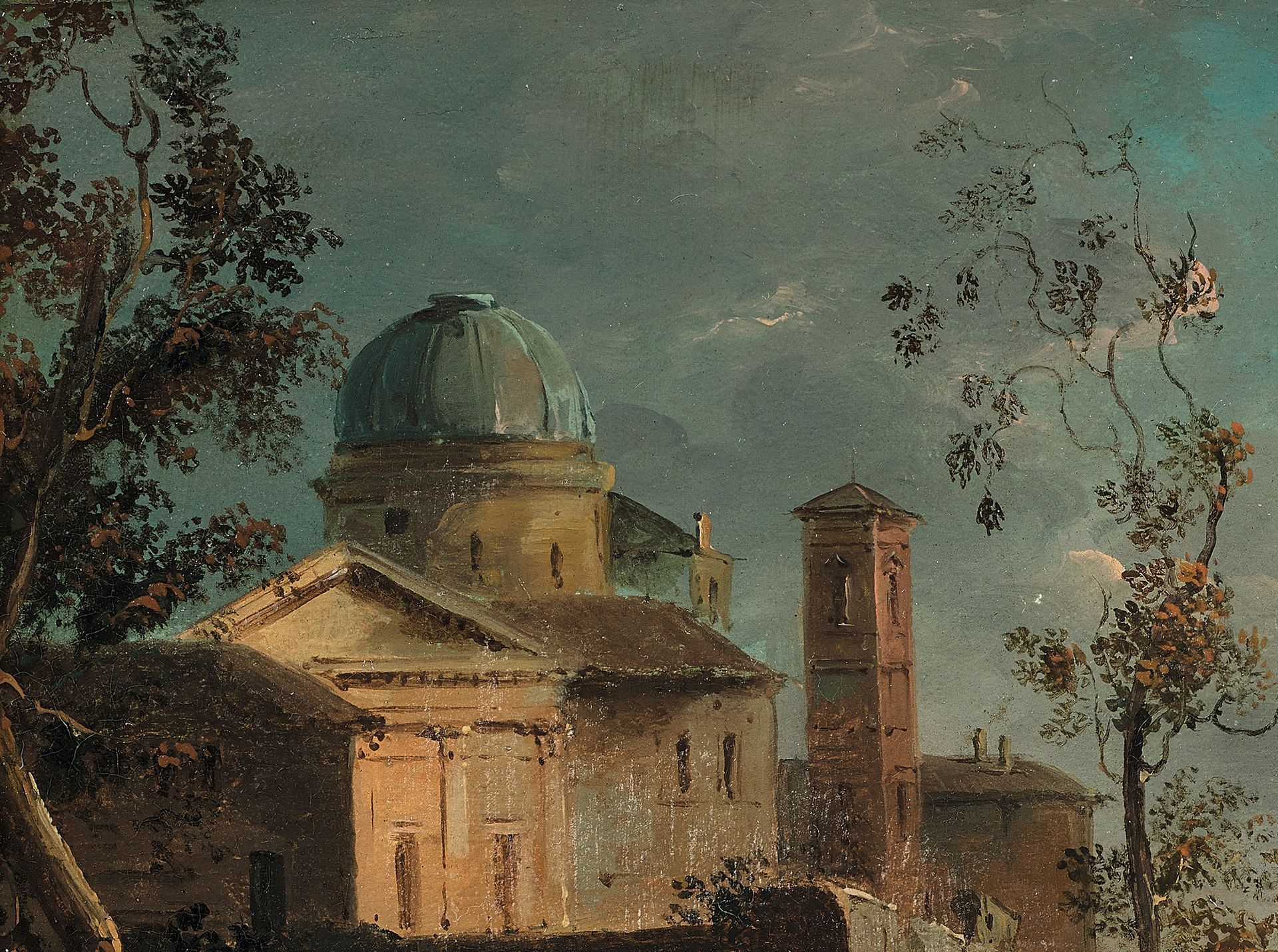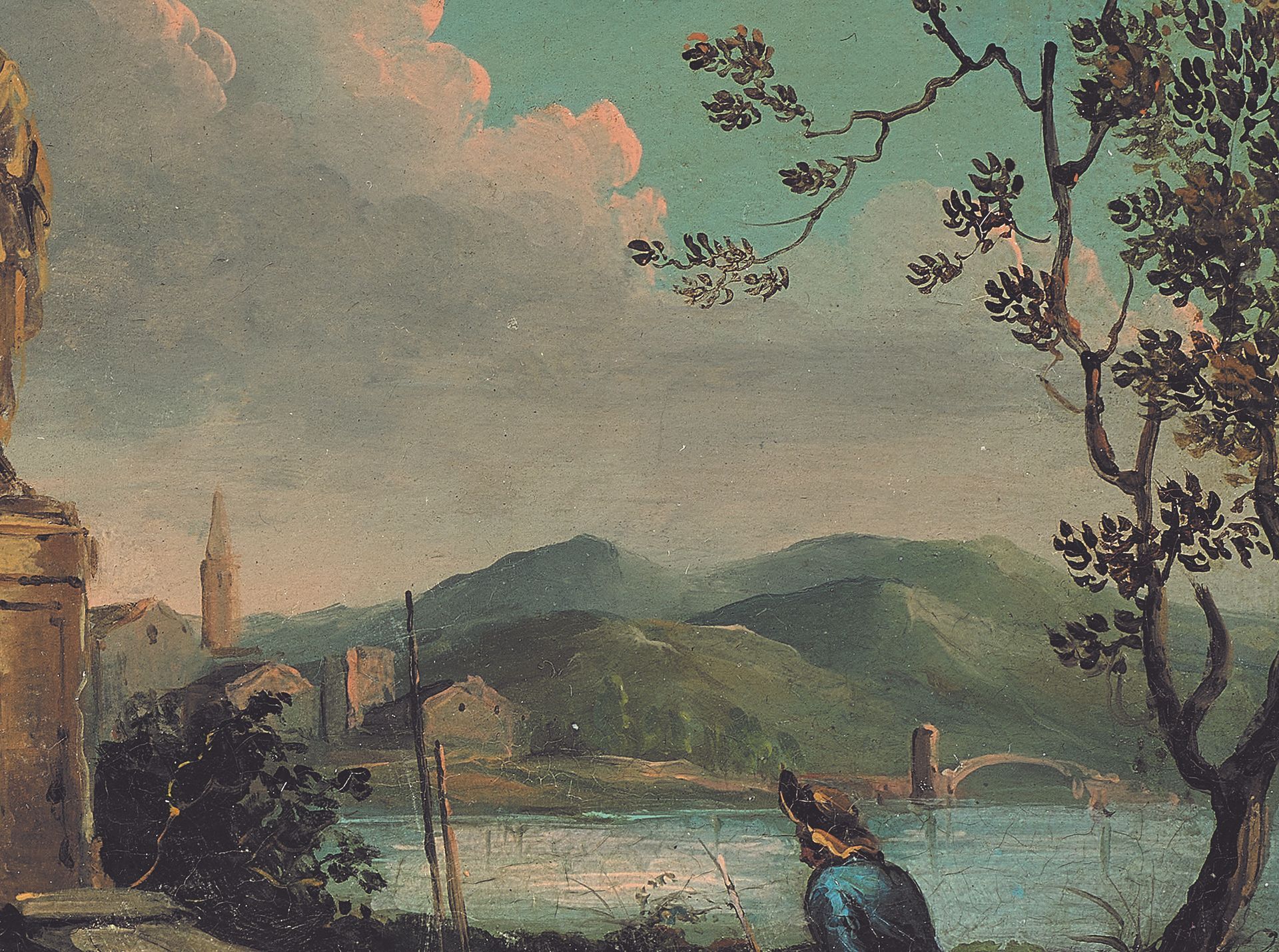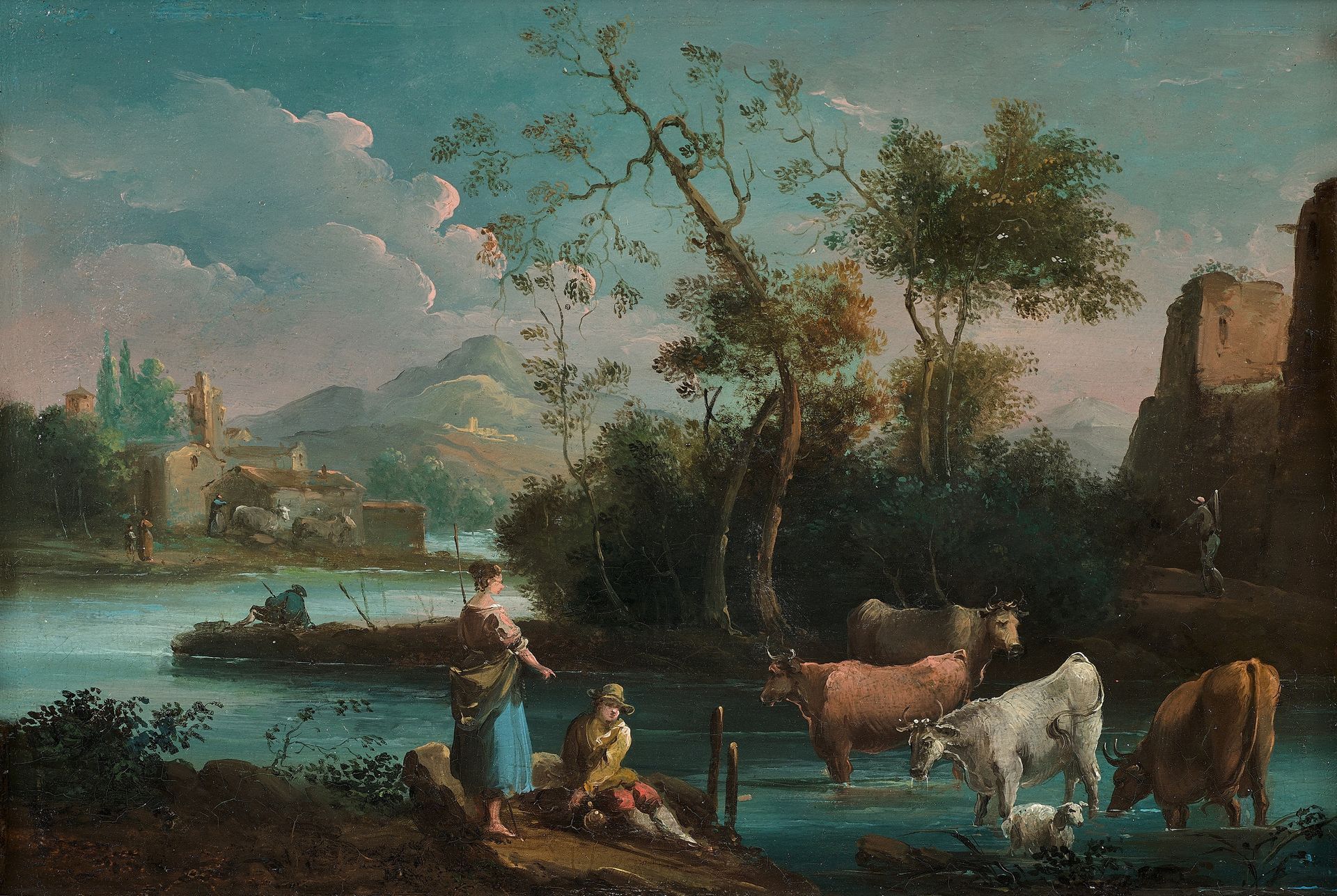
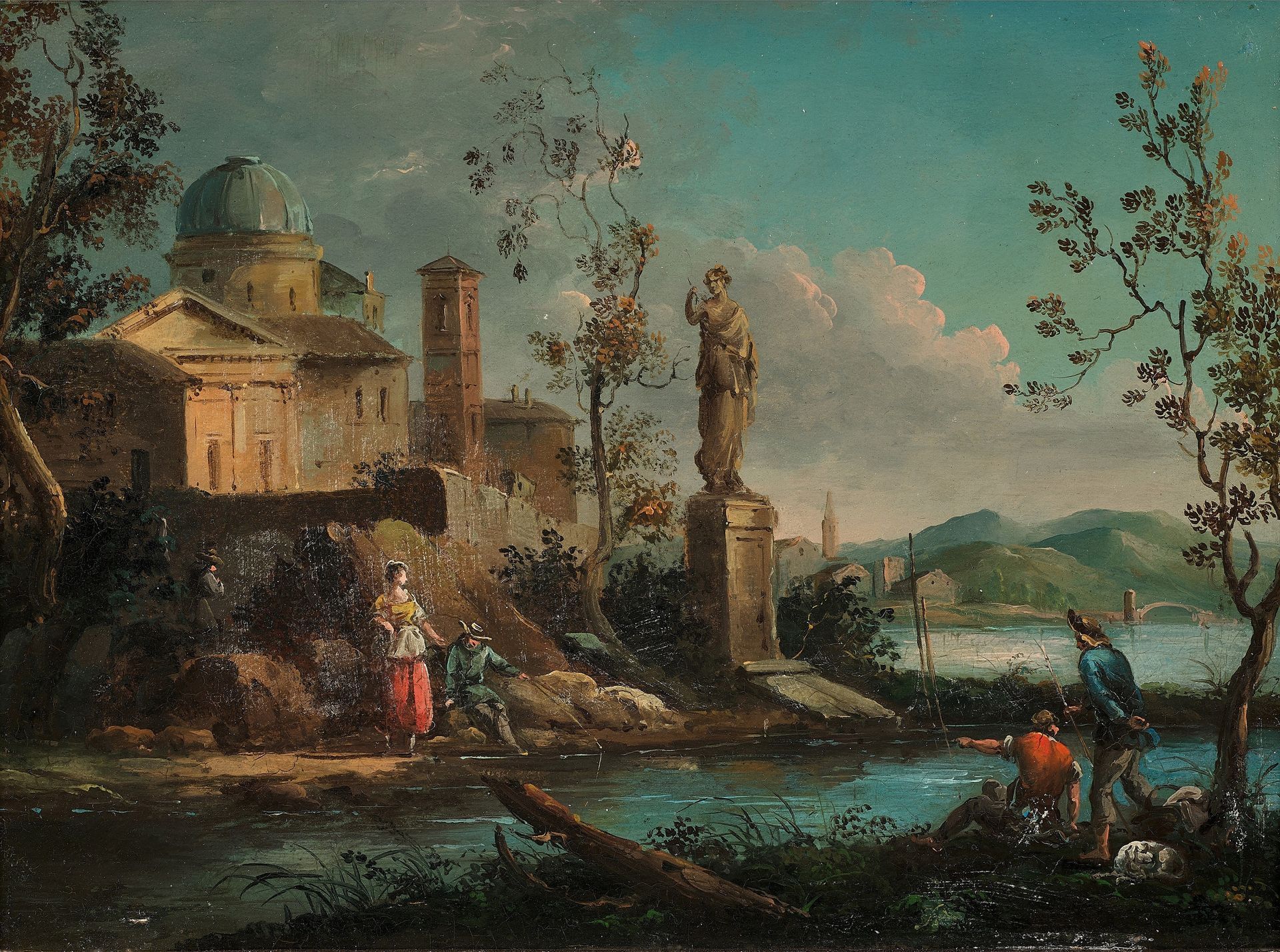
Marco RICCI (Belluno 1676 – 1730)
Circa 1720
Lake Landscapes with architecture, shepherds, and fishermen Oil on copper, a pair :
each copper: 15 x 22,5 cm
each framed: 27 x 3 cm
PROVENANCE
- Private collection Lyon until March 2024
THE ARTIST
The nephew of Sebastiano Ricci (1659-1734), Marco probably began his career in his uncle's Venetian workshop, after leaving their hometown of Belluno in the Veneto mountains. He then worked in Rome, where he stood out as a landscape and perspective painter. Subsequently he went to England (1708-1710) and he achieved no less success there. It has been suggested that Ricci may have learned the technique of tempera on kidskin during his second trip to England (1712–16) where he had traveled in the company of his uncle. After his return to Venice in 1716, he made constant use of this technique, executing numerous landscapes in great demand by European and English collectors (see Succi and Delneri, op. cit., p. 21). In 1717, he collaborated with his uncle on the Miracle of Moses, preserved at the Academy. He also worked in many cities in Italy. Through his uncle, he had been influenced by Neapolitan landscape painters and that of Magnasco. He was the initiator of landscape painting in Venice. In the last years of his life, he readily composed imagined landscapes embellished with classical ruins.
An exhibition held in Belluno in 1993 celebrated the artist as the inventor of 18th-century Venetian landscape painting who had Francesco Guardi, Michele Marieschi and Canaletto as direct disciples (D. Succi and A. Delneri et al., Marco Ricci e il paesaggio Veneto del Settecento, exhib. cat., Belluno, Palazzo Crepadonna, 1993).
THE WORKS
Our naturalistic landscapes seem inspired by RICCI's native countryside, perhaps a view towards the foothills of the Vicenza Dolomites and characters taken directly from reality. We find in this pair of refined brass instruments all the stylistic characteristics of the artist's style, moreover similar to the temperas so familiar in the work of Marco RICCI. The architectures can be compared to A capriccio landscape with a domed church (Sotheby's, July 10, 2014, lot 233), but also the position of the fisherman from behind in A Capriccio with Horses Watering in a River Outside a Walled Town (1720, gouache, 31.6 x 45.6cm, Art Institute Chicago). Furthermore, the characters are in all respects comparable to those in A View in the Veneto (Marco RICCI, canvas, 60.5 x 47.7 cm, Venetian Baroque and Rococo Paintings, London, Walpolle Gallery, June-July 1990).
PHOTOGRAPHS' DETAILS


